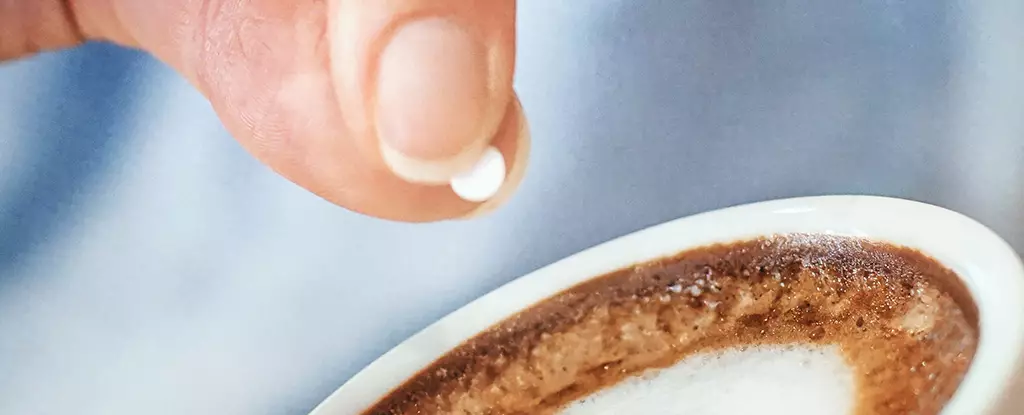In recent years, antibiotic resistance has emerged as one of the most pressing public health challenges of our time. As bacteria evolve and develop immunity to our most potent drugs, the prospect of once-treatable infections becoming deadly looms ever larger. Millions of lives are threatened annually by infections that defy traditional pharmaceuticals, and if we continue on this trajectory, we risk returning to a time when simple surgical procedures might become impossibly dangerous. The medical community is scrambling for solutions, from innovative research into new antibiotics to exploring ancient herbal remedies. However, amid this crisis lies an unexpected ally: saccharin, a sweetener often criticized for its health impacts.
The Sweet Surprise: Saccharin’s Potential
A recent study conducted by researchers at Brunel University has thrown a spotlight on saccharin, unveiling its potential to revolutionize our approach to antibiotic resistance. Within controlled lab settings, saccharin demonstrated remarkable abilities in disrupting bacterial structures, particularly against formidable foes like Staphylococcus aureus and Escherichia coli. What’s striking about this discovery is that saccharin could serve dual roles: not only does it exhibit antimicrobial properties, but it could also improve the efficacy of existing antibiotics.
Ronan McCarthy, a microbiologist involved in the study, emphasizes the significance of this breakthrough. He describes saccharin as a “novel antimicrobial” that dismantles bacterial walls, causing pathogens to distort and eventually perish, a finding that could potentially alter the landscape of how we treat infections. If a commonly used artificial sweetener could help combat superbugs, it may well pave the way for a paradigm shift in medical practices concerning antibiotic treatments.
The Realities of Research and Medical Application
Despite the excitement surrounding saccharin’s antimicrobial potential, it is essential to approach these findings cautiously. While early results are promising, the transition from lab discoveries to clinical applications is fraught with challenges. Testing on pig skin was a step forward, showing that saccharin-infused dressings could outperform standard materials in reducing bacterial loads. Though such results are encouraging, clinical trials that rigorously assess the effectiveness and safety for human patients are crucial.
Additionally, the broader implications of introducing saccharin as an adjuvant in antibiotic therapy cannot be overlooked. Artificial sweeteners have long been under scrutiny for their potential health risks, ranging from metabolic implications to concerns about gut health. Will the benefits of using saccharin to combat antibiotic resistance outweigh the potential negative effects on human health? This question remains to be deeply explored in subsequent research, and it underscores the need for a nuanced understanding of the biological intricacies of saccharin.
Artificial Sweeteners: A Double-Edged Sword
The notion that saccharin could be recast as a superhero in the fight against bacterial infections is indeed captivating, yet it compels us to reconsider our relationship with artificial sweeteners. Many of us have incorporated these substitutes into our diets under the belief that they can help manage sugar intake and combat obesity. However, skepticism persists regarding their long-term health effects, and now we must grapple with the idea that some of these products may, paradoxically, also contribute to health crises.
The challenge lies in balancing the use of saccharin in therapeutic contexts while remaining vigilant about its potential pitfalls. The question of dependency arises: can we rely on a synthetic substance to address a growing natural problem? Environments shaped by artificial additives may inadvertently be undermining our own natural resilience to infections.
The Urgency of Innovative Solutions
With antibiotic resistance claiming lives and complicating medical procedures, we face an urgent call for innovation in therapeutic approaches. Saccharin’s antimicrobial capabilities may offer a glimmer of hope, but they should not distract the medical community from the pressing need to develop entirely new classes of antibiotics. The stakes are high, as we continuously lose ground against evolving bacteria, highlighting a critical need for sustained investment in antibiotic research.
While saccharin may serve as an adjunct in our fight against drug resistance, it is not a silver bullet. We must remain vigilant, exploring every avenue, whether through saccharin or other means, to safeguard medical advancements and public health for future generations. The battle against antibiotic resistance is far from over, and we must carry forward the lessons of caution, experimentation, and hope.

